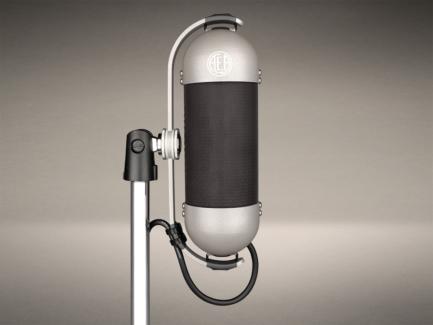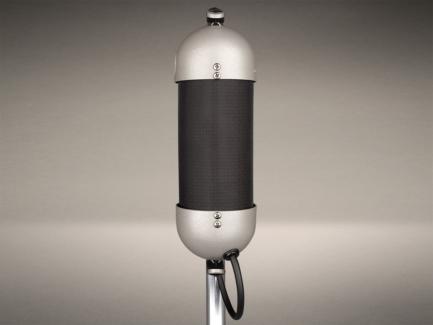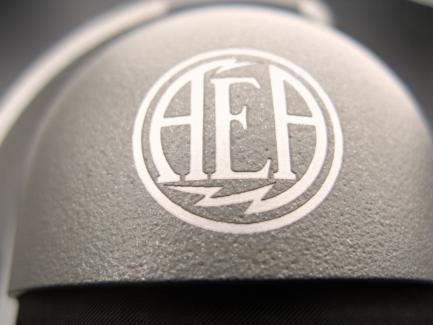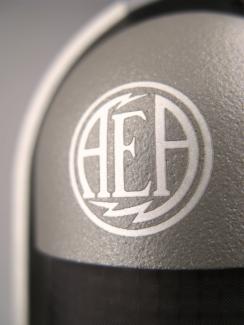- Details
- Media
- Users & Reviews
- Applications
- Specs
- Downloads
|
"I hate you guys! Now I have to buy them. I used the R92 on Al's Di Meola's guitar amp, and the 84's about a foot away, Fantastic!!!"
– Paul Antonell, New York |
The Up-Close and Personal RibbonBuilding on the success of AEA’s acclaimed R84 ribbon microphone, Wes Dooley and AEA’s team of engineers set out to once again expand the sonic possibilities of ribbon microphones with the R92 model. Reduced proximity bass boost and excellent wind blast protection make it suitable for close miking of guitar and bass amps, drums, and vocals. At half the distance to the source, the R92 delivers a similar bass-to-treble balance as the R84. In addition, the integrated shockmount and swivel allow for easy setup and positioning in tight spaces. The smooth high frequency response of the R88 and R84 transducers has been further extended in the R92, making it a unique voice in the world of ribbon mics. Two Voicings - Endless PossibilitiesAEA has designed the R92 to have slightly different tones on the front and rear pickup lobes of the bidirectional microphone. The front lobe of the R92 is the "crisp" side, offering exceptionally clean and realistic high end detail. The rear lobe is the "smooth" side, which has a bit of classic ribbon high end roll-off reminiscent of the iconic 44 that can help to handle harsh transients in a very refined and flattering way. The bass reproduction of the R92 is very solid and extends to the lowest audible bass frequencies. A Guitar Player’s FavoriteLike all figure-of-8 microphones the R44 or R84 ribbons are subject to proximity effect - the increase in bass as you move the microphone closer to the source. While this effect can be particularly flattering for singers and to create a “larger than life” sound, it can get too much and overpowering in some recording situations. The guitar players on our staff asked for a ribbon microphone that captured an authentic and balanced electric guitar tone when put right onto the grill of his Fender amp. Thanks to its purely passive signal path and Wes’ bag of acoustic tricks, the R92 not only handles the SPL levels of a high-gain amp with ease, but it also translates all the gritty details of the distortion that you’ve been tweaking so carefully. |
|
Listening Room |
Videos |
 Wolfgang Stach
(Guano Apes, Jupiter Jones, BAP) |
 Vance Powell
(Jack White, The Dead Weather, Raconteurs) |
 Dan Blessinger
(Bioshock 2, Shadow of Mordor, City by the Sea) |
 Gustavo Borner
(Los Tigres del Norte, Leon Gieco, Juanes, Ricky Martin, Guardians of the Galaxy) |
R92 Ribbon Mic Review / Guitar Player
"The R92 recorded an organic balance of room ambience and amp roar. The basic flavor was a fairly accurate reproduction of what your ears hear in the room, but with a fantastic airiness and spatial dimension."
R92 & TRP Studio Ribbon Microphone and Preamp / Sound on Sound
"This classy ribbon mic doesn't just look great - AEA's thoughtful design means that it also offers great results...If you are considering investing in the smooth natural character of a ribbon mic, this is certainly one worth auditioning first-hand. I've fallen in love with it!"
R92 Ribbon Mic Review / Tape Op
"We tried a few different combinations of mics and preamps, and regardless of mic preamp, Justin consistently chose the R92 out of the mics we compared. Our final choice ended up being the R92 into a Pendulum Quartet II."
R92 Ribbon Mic Review / PAR
The AEA R92 is a wonderful microphone ... If anyone ever told me that a ribbon could capture high requencies the way the R92 captures high frequencies, I would have called them a liar ... Its top end is wonderfully pristine. You truly have to hear it to believe it.
Ribbon Revival - R92 / EM
Among the other premium mics, I was most excited about the AEA R92.The sweet highs of this pill-shaped transducer make it an ideal candidate for applications that have always challenged ribbon mics — namely acoustic guitar, percussion and modern pop vocals.
R92 Ribbon Mic Review / EQ
"To sum it all up, this microphone exceeded all expectations that I had. The versatility, the design, the excellent wind-blast protection, the reduced proximity bass boost, the clean, the even frequency response, great high end, and very affordable price make this a must have for anyone looking for a real ribbon to add variety to their sound or to replace some finicky vintage mics."
R92 Ribbon Mic Field Test / Mix
"It rounds off transients in true ribbon fashion, adding a naturally compressed sound that flatters even the most strident source. This tendency and its tailored frequency response make the R92 a hands-down winner at close quarters. You don't need to be afraid to get this mic in a singer's face or right up on a speaker. The R92 – like its forefathers carrying the same engine, the R84 and R88 – is unequaled in its price range. I almost felt guilty."
|
Applications
VocalsTry using the R92 for a warm, clear vocal sound. The smooth character of the R92’s treble response means that it may be extensively shaped and processed without risk of nasty resonance artifacts. Start with the singer positioned 4-6 inches (10-15 cm) away on axis from the microphone. The ribbon is well protected from damaging plosive blasts, but to avoid noises from wind blasts, we recommend using a pop filter. If you are recording a musician who sings and plays an instrument at the same time, you can make use of the exceptional rejection offered by the 90º “null” planes of the bidirectional pickup pattern to reduce the pickup of the instrument in the vocal microphone. You may want to start by positioning the singer 4 to 6 inches (10-15 cm) directly on axis from the microphone. Acoustic GuitarWhen recording a solo acoustic guitar a good starting point is to position the R92 4-8 inches (10-20 cm) away from the guitar roughly pointing at the bridge. This placement will capture clear midrange and pick articulation with a balanced low end. As the bass response of the R92 is sensitive to the miking distance, try rotating the mic to use its excellent horizontal off-axis performance to find the “sweet spot”. Try pulling the microphone away from the guitar in increments of 1-2 inches (2-5 cm). Listen to the guitar up close, and when you find a spot that sounds good, try putting the R92 there. Let your ears be your guide. Electric GuitarTo capture an authentic and balanced guitar tone with your R92, place the mic directly in front of the grill. Identify where the center of the speaker cone is located, and place the R92 a few inches (5-10 cm) away from the speaker. Pointing the mic at the grill center will deliver a very direct, “in-your-face” sound. This is the spot that will obtain the most high-frequency content. If it sounds too harsh, try moving the microphone to the side parallel to the speaker. You can also try positioning the R92 at an angle. You will find that small differences in positioning can make huge differences in the sound, so experiment until you find the spots you like. Close up, the R92 is very good at spotlighting a speaker’s unique sounds at various cone locations. When using multiple microphones on a guitar cabinet at once and mixing them to create a particular sound, it is important to pay attention to the phase relationship between the different signals. Try to position the different microphones as close to each other as possible, to avoid phase problems caused by sound arriving at the microphones at slightly different path lengths. Make sure to listen to the combined signal summed to mono to catch potential comb filtering that could be caused by out-of-phase signals. If you are recording with the back lobe of the R92, it is important to use reverse the polarity on the preamp or DAW. For a more natural sound that captures the sound of the amp in your room, try moving the microphone back a couple of feet. Brass & WoodwindsThe R92’s warm and detailed characteristics make it a great focus mic for brass and woodwinds. Soprano saxophone, trumpet and most high-pitched brass and woodwind instruments are known to have “edgier” or “brilliant” frequency characteristics. The R92’s smooth treble response on the back lobe is great at preserving without aggravating these striking tonal qualities. Depending on the instrument’s dynamic range, we recommend starting by positioning the R92 8-16 inches (20-41 cm) away from the source. For a focused sound, use the swivel mount (not the mic stand) to point the microphone on axis towards the bell or preferred tone holes. If you are concerned about wind blasts, use a pop filter, or position the microphone slightly off axis. Drums & PercussionThe R92 excels at close and medium miking of drums and percussion. A common use for the R92 is on kick drum. While it is never recommended to put a ribbon mic inside or in front of the kick drum port, positioning the mic a few inches away from the resonant head angled slightly down can capture a very natural sound. Make sure that you don’t feel an air blast on axis to the microphone. Engineers also love this mic on toms. The R92 excels both at capturing huge low end and upper midrange. A common technique is to angle the R92 so that it picks up the floor tom, but position it in a way that the ride cymbal is in the null. It can produce a huge thud that is very natural. |
Additional information
|
Specifications and CurvesOperating Principle: Pressure gradient microphone Directional Pattern: Bidirectional (Figure-of-8) Frequency Range: 20 Hz to 20 kHz Maximum SPL: 165+ dBSPL (1% third harmonic > 1 kHz) Output Sensitivity: 1.8 mV/Pa (-55 dBV) into unloaded circuit Output Impedance: 270 Ω nominal Recommended Load Impedance: 1.2 kΩ or greater Powering: Not required or recommended Polarity: Pin 2 high for positive pressure on front of microphone. Connector: XLR-3M wired to a 3 m captive cable |
|
Off Axis Response:
Polar Pattern: Native bi-directional pattern Horizontal: Level changes with angle, frequency response is consistent, –35 dB null at 90° / 270° Vertical: Level changes with angle, reduced HF response above and below 0° / 180° axis, –35 dB null at 90° / 270° Transducer element:
Ribbon Thickness: 1.8 μ (0.0000018 m) of pure aluminum Ribbon Width: 0.185” (4.7 mm) Ribbon Length: 2.35” (59.7 mm) Accessories:
Included: Custom storage / shipping case, manual Optional: Any length cable, inquire for price and delivery. Limited Warranty: One year parts and labor, shipping not included. Three year extended warranty if the product is registered. Weight with Cable: 2 lbs (0.9 kg) Weight with case: 7.5” (19.1 cm) Height: 7.5” (19.1 cm) Width: 2.9” (7.4 cm) Depth: 2.5” (6.4 cm) |
R92 Manual and Literature |
Related Products |
 English
English 日本語
日本語






.jpg)
.jpg)
.jpg)

